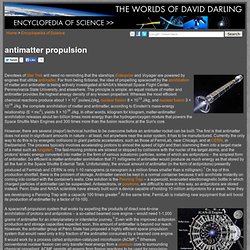

New microbe turns sugary seaweed into fuel. CO2. Ionic liquid catalyst helps turn emissions into fuel. An Illinois research team has succeeded in overcoming one major obstacle to a promising technology that simultaneously reduces atmospheric carbon dioxide and produces fuel.

University of Illinois chemical and biological engineering professor Paul Kenis and his research group joined forces with researchers at Dioxide Materials, a startup company, to produce a catalyst that improves artificial photosynthesis. The company, in the university Research Park, was founded by retired chemical engineering professor Richard Masel.
The team reported their results in the journal Science. Artificial photosynthesis is the process of converting carbon dioxide gas into useful carbon-based chemicals, most notably fuel or other compounds usually derived from petroleum, as an alternative to extracting them from biomass. In plants, photosynthesis uses solar energy to convert carbon dioxide (CO2) and water to sugars and other hydrocarbons. Next, the researchers hope to tackle the problem of throughput.
Rocket Man Breaks Multi-Loop Record. Very, very, very fast Turbine powered RC Jet. Antimatter propulsion. Devotees of Star Trek will need no reminding that the starships Enterprise and Voyager are powered by engines that utilize antimatter.

Far from being fictional, the idea of propelling spacecraft by the annihilation of matter and antimatter is being actively investigated at NASA's Marshall Space Flight Center, Pennsylvania State University, and elsewhere. The principle is simple: an equal mixture of matter and antimatter provides the highest energy density of any known propellant. Antimatter. In particle physics, antimatter is material composed of antiparticles, which have the same mass as particles of ordinary matter but have opposite charge and other particle properties such as lepton and baryon number.

Encounters between particles and antiparticles lead to the annihilation of both, giving rise to varying proportions of high-energy photons (gamma rays), neutrinos, and lower-mass particle–antiparticle pairs. Setting aside the mass of any product neutrinos, which represent released energy which generally continues to be unavailable, the end result of annihilation is a release of energy available to do work, proportional to the total matter and antimatter mass, in accord with the mass-energy equivalence equation, E=mc2.[1] Antiparticles bind with each other to form antimatter just as ordinary particles bind to form normal matter.
For example, a positron (the antiparticle of the electron) and an antiproton can form an antihydrogen atom. History of the concept. Anti_prod_pdf. A Black Hole Engine That Could Power Spaceships. [0908.1803v1] Are Black Hole Starships Possible. NASA and DARPA Plan ‘Hundred-Year Starship’ To Bring Humans to Other Worlds And Leave Them There Forever. If NASA ever gets a clear directive for interplanetary exploration, a new Hundred-Year Starship could be their version of the Mayflower.

And like the first pilgrims, Martian explorers might set sail with the knowledge they would never return home. NASA and DARPA have joined forces to build something called a Hundred-Year Starship, according to the director of NASA's Ames Research Center. Simon "Pete" Worden said NASA contributed $100,000 to the project and DARPA kicked in $1 million. "The human space program is now really aimed at settling other worlds," Worden said, according to a Singularity University blog that covered the event. NASA Ames? Worden reveals DARPA-funded ?Hundred Year Starship? program.
Video of Pete Worden and Peter Schwartz.

Audio podcast of the full 19-minute conversation also available. NASA Ames Director Simon “Pete” Worden revealed Saturday that NASA Ames has “just started a project with DARPA called the Hundred Year Starship,” with $1 million funding from DARPA and $100K from NASA. “You heard it here,” said Worden at “Long Conversation,” a Long Now Foundation event in San Francisco.
Hydrogen Storage Materials and the Characterisation of their Hydrogen Sorption Properties. Hydrogen storage in Metal Hydrides. Hydrogen has a very high energy content of 243 kJ/mol, which makes it a very attractive, lightweight energy carrier.

As a portable source of hydrogen, Metal Hydrides are technologically relevant materials because the volumetric density of hydrogen that is attainable in solid-state storage media far exceeds that of compressed or even liquid hydrogen. LaNi 5-type alloys can store up to 130 kgH/m 3, where liquid hydrogen reaches only 70. Unfortunately, the gravimetric (as opposed to volumetric) capacity of LaNi 5 reaches a mere 1.4 wt.%, which is rather heavy for mobile applications.